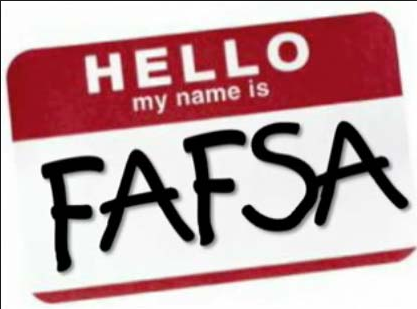Fast and Quick Student Loans - Speed Up the Process

Quick and Fast Student Loans

Fast and Quick Student Loans
Fast and quick student loans - do they exist? Possibly. It all depends on how much you know about student loans and what it takes to qualify. By knowing this basic information, you can greatly speed up the process.
Here's what you need to know to improve your chances at getting a fast and quick student loans.
What is a Student Loan?
A student loan is money that you borrow either from the government or from private lenders. You must pay the money back with interest.
Who Can Get Student Loans?
You can qualify for a student loan if you're an undergraduate student - in your first four years at college. You can also qualify if you're in graduate school. Parents of dependent undergraduate students can apply for quick student loans on behalf of their children also.
How Much Can I Borrow?
That depends on what your financial need is. Your financial need is decided by figuring out how much you and your parents can contribute to your education and the cost of the education. The maximum amount you're eligible for increases with each year of study.
One of the easiest and most accurate ways to learn how much you can get a quick student loan for is to use the FAFSA4caster. This is a free financial aid calculator provided by the government that's easy to use and helps you know how much you can get for a student loan.
The FAFSA4caster is a planning tool, not a loan application. You'll be asked questions about your federal tax information and bank statements, as well as the cost of the school you plan on attending.
Money for College

What Are The Different Types of Student Loans?
Federal Stafford Loans - These loans include the Direct Loan Program where students can borrow directly from the federal government and the Federal Family Education Loan Program. Money for the Federal Family Education Loan Program is provided by private lenders.
Perkins Loans - These loans are provided by some schools and are for the neediest students. These loans are usually very low interest rate student loans.
Federal Plus Loans - These loans are for parents that qualify for their undergraduate students.
Are any of these fast, guaranteed quick student loans? Not necessarily. First, you must fill out paperwork and then wait to see if you qualify.
How was Your Student Loan Experience?
How has your experience been when applying for a student loan?
Do I Qualify for a Quick Student Loan?
You must meet some basic requirements to qualify for federal student aid. You must be a U.S. citizen or a non-citizen with a social security number. Of course, you must have a high school diploma or completed your GED (General Education Development), and you must be enrolled in college. Males between the ages of 18 and 25 also qualify if they've registered for Selective Service.
How Do I Apply for a Quick Student Loan?
Your first step in applying for a student loan is the FAFSA form. Even if you don’t think you qualify, fill it out anyway. Most aid programs, whether they're government related or not, use this form when deciding to loan money for school. You may not qualify for a federal student loan, but by looking at your FAFSA form, you might qualify for other student aid programs offered.
What is a FAFSA?
It stands for Free Application for Federal Student Aid. It's the form the government and other lenders use to decide if you qualify for financial assistance. For every year you need financial aid, you'll have to fill out a FAFSA.
It's best to fill these out between January 1st and March 1st. Submit your FAFSA as soon as possible. Schools award financial aid on a first-come, first-serve basis so this isn't something you can take your time on.
Submit Your FAFSA Here!
- Online FAFSA Form
Start your student loan application here. Fill out the online FAFSA form and get a quick and easy start applying for student loans.
Where Do I Get This FAFSA Form?
You can get FAFSA forms in several different places. Your high school guidance office should have them as well as the college financial aid office. FAFASA forms are also available at the public library, online at www.fafsa.ed.gov/ or by calling the Federal Student Aid Information Center at 1-800-4-FED-AID.
Is Filling Out the FAFSA Hard?
No, it's just a form. The hard part is gathering the information you must have to fill the form out. If you're an organized person, gathering the information won't be that difficult to get a quick student loan.
To speed up the process of filling out the FAFSA, it helps to have all your information together before you start. The information you'll need is listed below.
If you're filing as an independent, you won't need to include your parent's information.
If you're independent and married, you need your spouse's information.
If you're filing as a dependent, you need both your information and your parent's information.
- Driver's License
- Social Security Number
- W-2 forms
- Federal Income Tax Returns
- Bank Statements
- Mortgage Information
- Stock and Bond Records
- Records of medical and dental expenses not covered by insurance
- Business records
- Records for untaxed income
- Child support payment records
- Welfare benefits
- Social security benefits
- Veteran's benefits
- Military allowances
- Clergy allowances
If you're not a U.S. citizen, you'll need your alien registration card.
The 5-Minute FAFSA
Okay, I Filled It Out - What Next?
Instructions on the FAFSA form will tell you where to submit it. Anywhere from one to four weeks after submitting it, you'll get a report that everyone refers to as a SAR - yet another acronym. It stands for Student Aid Report.
Your SAR will tell you what the government expects your family to help pay toward your college expenses. Ready for another acronym? Here goes - EFC. EFC stands for expected family contribution. This is important.
How is EFC Figured?
Based on the information in your FAFSA, the EFC is the total amount of what the student and both parents of the student can and should pay. This doesn’t mean they have to, but the government sees that as what you are able to pay and bases their decision about how much they'll loan you.
The government sees both parents are responsible for contributing to your college education - even if they're divorced. If one of your parents has remarried, the income of the stepparent is also considered.
The first part of the EFC is student contribution. This is how much the government thinks you can help pay toward your college education. They figure it by taking 35% of your assets and 50% of the money you made during the past year above $2,200. This includes what you made during the summer.
A little hint - the more you own and the more you make, the higher your EFC will be. The more family members you have in college, the lower your EFC will be.
Can I File For Student Aid Without My Parent's Financial Information?
If you feel your parents make so much money it will kill your chances of getting financial aid, you can file as an independent student - but only under certain conditions. Are you older than 24-years-old? Are you an orphan? Are you a veteran? Are you married? Are you a ward of the courts? Do you have a child?
If you can answer "yes" to any of these questions, you can file independently of your parents.
So, Did I Qualify?
The final formula schools use to decide how much financial aid you're eligible for is:
COA - EFC = Financial Need
Wait, there's another acronym - COA.
What's COA?
COA stands for "Cost of Attendance". The school figures this by adding up the cost of tuition, school fees, books, supplies, room and board, cost of travel, personal and miscellaneous costs. In other words, everything it's going to cost you to go to college. This figure changes from school to school.
Fast and Quick Student Loans
The key to getting a fast and quick student loan is by knowing this basic information, being organized, and having all your financial information ready to fill out your FAFSA form.
The important thing to remember is to fill out your FAFSA as close to January 1st as possible. The sooner you apply, the better your chances of receiving financial aid and getting a fast and quick student loan. So, gather that information and fill out your FAFSA. Your student loan and your future are waiting!









